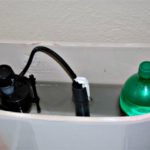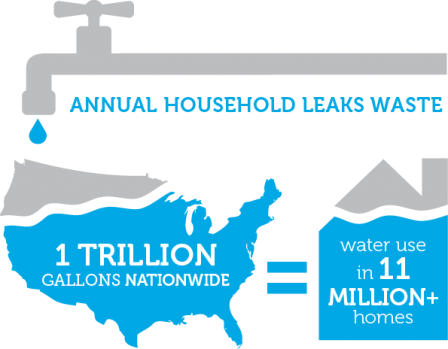 In the next 30-50 years there will be a rise in population in Houston and its surrounding areas bringing the total to 11 million people. We look at the projected population growth against our potable water supply. While the population continues to rise, our water supply does not. An increase in conservation is severely needed. There are many ways to conserve that are easy and ultimately cost effective.
In the next 30-50 years there will be a rise in population in Houston and its surrounding areas bringing the total to 11 million people. We look at the projected population growth against our potable water supply. While the population continues to rise, our water supply does not. An increase in conservation is severely needed. There are many ways to conserve that are easy and ultimately cost effective.
Communities across the country are starting to face challenges in maintaining healthy and affordable water supplies; that’s why it’s more important than ever to use our water wisely and not waste it.
Average Daily Household Water Use
A typical household uses approximately 260 gallons of water every day. We can reduce this amount by using these ten simple steps to water conservation.
- Install low-flow showerheads, taps, faucets, and toilets. Older faucets use between 3 and 7 gallons per minute (GPM), while low-flow aerators reduce water flow to 1.5 GPM. Likewise, a low-flow toilet can reduce water consumption per flush by approximately 30%. High efficiency toilets can save an average household 2500 gallons a year per toilet.
- Turn off the faucet while brushing your teeth, shaving, washing your hands, or rinsing dishes or vegetables. Each minute you have the faucet off saves at least 3 gallons. In the shower, get wet, turn off the water to lather, and then turn the water back on to rinse. To make this an easy step, some low-flow showerheads have levers to temporarily stop the flow of water.
- Fix dripping taps and leaking toilets by replacing washers and worn parts. A faucet drip or invisible leak in the toilet will waste up to 5,475 gallons a year. To check for toilet leaks, add 10 drops of food coloring to the tank. Wait 15 minutes. If the color appears in the bowl, you have a leak.
- Place Plastic jugs filled with sand or stones in your toilet tank to reduce the amount of water it uses per flush. Don.t use bricks, which can flake off inside the
 tank and interfere with the toilet’s operation.
tank and interfere with the toilet’s operation. - Wash only full loads in both the dishwasher and washing machine, or set the water levels to accommodate smaller loads.
- Use mulch and shade netting to reduce evaporation in your garden. Mulch helps the soil stay moist, and as an added benefit, reduces weeds, which are water gluttons. Water only when plants wilt or when it’s difficult to push a screwdriver into the soil.
- Use biodegradable (phosphate-free) detergents and soaps and re-use dishwater in the garden. If you want to make an even greater impact, consider plumbing your house to a gray-water system that collects water from your sinks, washing machine, baths, and showers for irrigating (check your local water regulations first).
- Xeriscape. Is much like natural landscaping, however instead of looking for plants that are native to your region, you are also looking for plants that have
 the ability to thrive on little to no supplemental irrigation throughout the year.
the ability to thrive on little to no supplemental irrigation throughout the year.
- Plant densely in your garden. The denser the vegetation, the more water that can be stored. Decreasing the amount of water that gets evaporated, this turns a higher percentage of water into productive water decreasing the amount of supplemental irrigation needed.
- Irrigation system. Have your system inspected to ensure it is operating correctly, identify any problems and set it to run more efficiently.
A Little Goes a Long Way
The potable water supply on this Earth is finite. With that being said, we have many tools we can use to extend and replenish the life of our water supply. It is our responsibility just as much as the next generation’s to do everything that we can to conserve; not just for yourself, but for your children as well. We at MUD 131 are simply requesting you be mindful of the water you are using and where it is going, for that alone could save countless gallons across the district.
To get a quick estimate of your annual water use click here.

